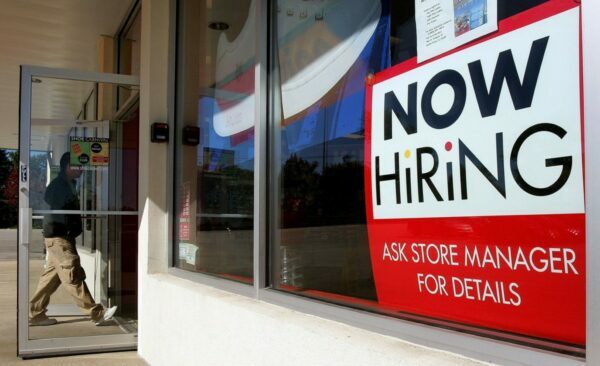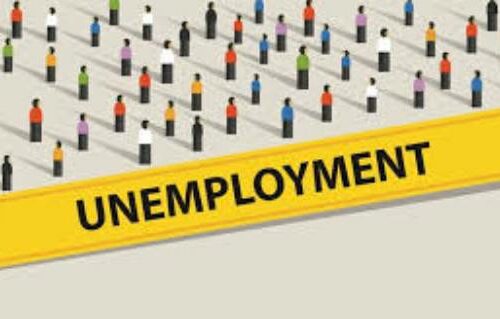
Most recent week after week jobless cases tumble to 199,000, the least since 1969
- Starting jobless cases added up to 199,000 last week, the least complete since November 1969.
- Second-quarter GDP development was reconsidered marginally higher to 2.1%, a piece underneath gauges.
- Orders for dependable products fell 0.5% for the month, underneath the assumption for a little increase.
The 71,000 slide denotes the eighth consecutive seven day stretch of decays, an impression of a tight work market that has organizations scrambling to hold and grow their labor forces
Week by week applications for joblessness benefit have been falling as of late as managers clutch their labor forces in a tight work market.
New filings added up to 199,000, a number unheard of since Nov. 15, 1969, when cases added up to 197,000. The report handily beat Dow Jones evaluations of 260,000 and was well beneath the earlier week’s 270,000.
It was the perfect most recent piece of uplifting news for the work market, which stays around 4 million positions underneath pre-pandemic levels yet has arranged a solid recuperation, adding around 581,000 positions per month on normal this year.
The most recent week after week information were delivered a day ahead of schedule due to the Thanksgiving occasion on Thursday.
“Getting new cases beneath the 200,000 level interestingly since the pandemic started is really huge, depicting further improvement,” said Mark Hamrick, a senior monetary expert at Bankrate. “The strains related with greater costs, deficiencies of provisions and accessible work applicants are weighed against low degrees of cutbacks, wage gains and a falling joblessness rate. Development will probably be better than average for a long time to come.”
The Labor Department didn’t demonstrate any unique factors that caused the dazzling fall, which could give a significant sign with regards to a positions market that has been battling to return since the Covid-19 shock in March 2020.
The decrease showed up at minimum to a limited extent to be because of occasional changes. Unadjusted cases added up to 258,622, which really was an increment of 7.6% from the earlier week.
Independently, the Commerce Department said that customer spending expanded by 1.3 percent in October, its quickest pace since March, in a sign that Americans are proceeding to spend.
The rash of positive markers had many banks and financial experts amending up their expectations for GDP development throughout the previous three months of the year, after a disillusioning second from last quarter. JPMorgan Chase updated its gauge to an annualized 7 percent, up from 5% on Wednesday. Morgan Stanley moved its estimate up to 8.7 percent from 3%.
Organizations across practically all areas are battling to track down specialists, hanging on close to the ones they have and raising wages to draw in more recruits.
While the economy is still short around 4 million positions contrasted with pre-pandemic levels, 531,000 positions were added last month, as per the most recent month to month business report from the Bureau of Labor Statistics. The joblessness rate tumbled to 4.6 percent, down from 4.8 percent.
In other financial reports Wednesday morning, second-quarter GDP development was reexamined up marginally to 2.1%, however that was underneath gauges for 2.2%. Likewise, tough products orders declined 0.5%, more terrible than assumptions for a 0.2% increase.
Alongside the drop in week after week asserts, proceeding with claims, which run seven days behind, fell by 60,000 to 2.05 million, a new pandemic-period low and a solid sign that the work market is getting eminently more tight.
“The economy is a lot more grounded than what we had initially perceived,” said Joe Brusuelas, boss market analyst at RSM, who moved his association’s GDP gauge up 7.2 percent from 5.6 percent. “The U.S. economy is blasting at present. In spite of the increment in expansion.”
Of specific note were joblessness claims, an intermediary for cutbacks, which fell in excess of 71,000 the week finishing Nov. 20, contrasted and the prior week. It addressed the eighth consecutive seven day stretch of decreases and a crucial shift, as cases are currently well underneath pre-pandemic levels. In 2019, normal week by week jobless cases floated around 220,000.
In the event that underlying week by week guarantees stay underneath pre-pandemic levels, the further developed work market could apply strain on the Federal Reserve to speed up its tightening plan, which Fed Chair Jerome Powell reported for this present month would add up to $15 billion every month. Quicker tightening could propel the timetable for rate climbs and lead the national bank to consider raising its benchmark financing costs sooner.
Gross domestic product, an aggregate, everything being equal, and administrations created, expanded one-10th of a rate point from the underlying appraisal of 2%, generally on the backs of up corrections in customer buys and private stock venture, as indicated by the Commerce Department.
The report additionally saw an enormous correction to the expansion in wages and pay rates, which rose $301.1 billion, a vertical amendment of over half from the first gauge.
The United States actually needs to recover somewhere in the range of 4 million responsibilities to return to where it was before the pandemic.
Also, however jobless cases have ticked lower as of late, a record 4.4 million Americans, or approximately 3% of the workforce, quit their positions in September, as indicated by information from the Bureau of Labor Statistics.
The new report had little impact on Wall Street. Financial backers were more centered around disillusioning acquiring reports from retailers, which are battling with production network issues, expansion and staffing. The three significant U.S. files were almost level Wednesday evening.
Since June 2020, the national bank has been buying $120 billion in bonds each month — $80 billion in Treasuries and $40 billion in contract supported protections — to add liquidity and keep the monetary framework working productively. Powell reported at the time that the national bank is “ready to change the speed of buys whenever justified by changes in the monetary viewpoint.”
Nondefense new orders for capital merchandise, an intermediary for business venture, fell 1.2% for the month. Be that as it may, shipments, unfilled orders and inventories generally rose.
Mia is a literature author. Mia was not interested in becoming a writer when she was a child, a fact which she himself admits that separates her from fellow writers she has met. As a young adult, Mia did not know what she wanted to be. she remembered, however, how in high school, she had been a class clown, and that made her decide to become a books writer. Later on, she moves toward the writing news articles. In recent she writes her news on Stock Invests.
Disclaimer: The views, suggestions, and opinions expressed here are the sole responsibility of the experts. No STOCK INVESTS journalist was involved in the writing and production of this article.





